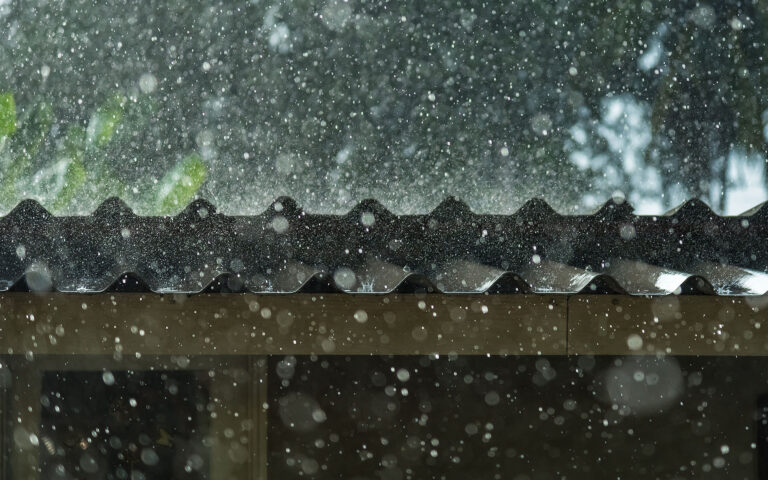Your roof is one of the most critical components of your home. It protects you and your belongings from the elements, and when it’s in good condition, it provides peace of mind.
However, over time, roofs can deteriorate due to wear and tear, weather damage, or other factors. When the time comes for a roof replacement, the costs can be substantial. Fortunately, if you have homeowners insurance, you may be able to get financial assistance to cover the expenses.
Ready to upgrade your roof today?
But not sure where to start?
In this comprehensive guide, we’ll walk you through the process of negotiating your roof replacement cost with your insurance company, from recognizing the signs that you need a new roof to filing a successful claim.
Signs That You Need a Roof Replacement

Before delving into the insurance negotiation process, it’s crucial to determine whether your roof genuinely needs to be replaced. Here are some common signs that indicate your roof might be due for an upgrade:
1. Age of the Roof
Most roofing materials have a limited lifespan. Asphalt shingles, for instance, typically last 20-30 years. If your roof is nearing the end of its expected lifespan, it’s a good indicator that you should consider a replacement.
2. Visible Damage
Inspect your roof for visible signs of damage, such as missing, cracked, or curled shingles. Damaged flashing, which prevents water from seeping into your home at joints and edges, is another red flag. If you see any of these issues, it’s time for a closer look.
3. Water Leaks
If you notice water stains or evidence of water infiltration inside your home, especially in the attic or on your ceiling, this could be a sign of roof damage. Don’t wait; leaks can lead to extensive structural damage if not addressed promptly.
4. Granule Loss
Examine your gutters and downspouts for granules from your shingles. Significant granule loss indicates shingle deterioration, which can compromise your roof’s ability to protect your home.
5. Sagging or Uneven Roof
A sagging or uneven roof is a serious issue that requires immediate attention. It often indicates structural problems or water damage in the attic.
6. Mold or Moss Growth
The growth of mold, moss, or algae on your roof can signify moisture retention, which can lead to rot and damage. Regularly cleaning your roof can help prevent this issue, but if it persists, it may be time for a replacement.
What Homeowners Insurance Will Cover
Homeowners insurance typically covers roof damage caused by sudden, unexpected events like storms, hail, fire, or vandalism. However, it may not cover wear and tear due to age or neglect. To maximize your chances of a successful insurance claim, it’s essential to understand your policy and its specific coverage.
Here’s what homeowners insurance may cover:
- Storm Damage: If a severe storm, such as a hurricane or tornado, damages your roof, your insurance should cover the cost of repairs or replacement. This includes wind damage, hail damage, and damage from falling trees or debris.
- Fire Damage: In the unfortunate event of a house fire, your insurance should cover the cost of repairing or replacing your damaged roof.
- Vandalism or Theft: If your roof is damaged due to vandalism or theft (for example, thieves removing metal components like copper flashing), your insurance policy should provide coverage.
- Fallen Objects: If objects like branches or other debris fall onto your roof and cause damage, your insurance should cover the repairs.
- Water Damage (in specific cases): Some policies may cover water damage that results from a sudden and accidental event, such as a burst pipe or a malfunctioning HVAC system. However, gradual water damage due to a slowly leaking roof may not be covered.
It’s essential to review your policy and discuss your coverage with your insurance agent to understand the specific details of what’s covered and any deductibles or limitations.
How Much Insurance Will Pay You to Replace Your Roof
The amount your insurance company will pay to replace your roof depends on several factors, including your policy’s coverage limits, deductibles, and the extent of the damage. Here’s a general overview of the process:
Deductible
Before your insurance coverage kicks in, you’ll need to pay your deductible, which is the amount you’re responsible for covering out of pocket. Deductibles can vary, so check your policy to know the exact amount.
Coverage Limit
Your homeowners insurance policy will have a maximum coverage limit for roof repairs or replacement. This limit may be based on the replacement cost value (RCV) or actual cash value (ACV) of your roof. RCV typically covers the full cost of replacing the damaged roof, while ACV considers depreciation and covers the roof’s current market value.
Inspection and Assessment
Once you’ve identified the damage to your roof, contact your insurance company to report the claim. An insurance adjuster will be assigned to assess the damage and determine how much they will pay. It’s crucial to document the damage thoroughly with photos and descriptions before the adjuster’s visit.
Estimates and Quotes
Obtain multiple estimates from reputable roofing contractors to assess the cost of the replacement. Share these estimates with your insurance adjuster to ensure they have an accurate understanding of the required repairs or replacement.
Negotiation
If the initial offer from your insurance company doesn’t cover the full cost of the replacement, don’t hesitate to negotiate. Provide any additional evidence or quotes that support your case. Be prepared to justify your request for a higher payout based on the extent of the damage and the cost of materials and labor.
How to Negotiate That Number in 6 Steps

Negotiating with your insurance company can be a challenging process, but with the right approach, you can increase your chances of receiving a fair settlement. Here are some tips for negotiating your roof replacement cost:
1. Understand Your Policy
Before negotiating, thoroughly review your insurance policy to understand what’s covered and the limits of your coverage. Knowing your policy inside and out will help you make a strong case during negotiations.
2. Document Everything
Keep detailed records of all communication with your insurance company, including dates, times, and the names of the people you speak to. Document the damage to your roof with photographs and written descriptions.
3. Get Multiple Quotes
Obtain quotes from multiple roofing contractors to determine the actual cost of replacement. Having multiple estimates can strengthen your negotiation position.
4. Be Persistent but Polite
When negotiating with your insurance company, persistence is key. Be polite but firm in your communication. If you encounter resistance, escalate the matter to a supervisor or claims manager.
5. Hire a Public Adjuster
If negotiations stall or become too complicated, consider hiring a public adjuster. Public adjusters are licensed professionals who can help you navigate the claims process and negotiate on your behalf. They typically work on a contingency fee basis, taking a percentage of your settlement.
6. Appeal If Necessary
If you believe your insurance company has not provided a fair settlement, you have the option to appeal the decision. Your policy will outline the steps for filing an appeal. Be prepared to provide additional evidence to support your case.
How to File an Insurance Claim
Filing an insurance claim for a roof replacement involves several steps:
1. Contact Your Insurance Company ☎️
Report the damage to your insurance company as soon as possible. Most insurers have a 24/7 claims hotline, so you can initiate the process right away.
2. Document the Damage 📸
Take photographs and detailed notes of the damage to your roof and any interior damage that resulted from the roof issue. This documentation will be crucial when filing your claim.
3. Obtain Estimates 💲
Contact reputable roofing contractors to provide estimates for the cost of repairs or replacement. Ensure that the contractors provide detailed written quotes that include materials and labor costs.
4. Meet with the Adjuster 👋
Once your claim is filed, an insurance adjuster will schedule a visit to assess the damage. Be present during the inspection to point out the areas of concern and provide any evidence you’ve gathered.
5. Review and Negotiate the Settlement 📝
Review the settlement offer from your insurance company. If it doesn’t cover the full cost of replacement, follow the negotiation tips mentioned earlier to seek a fair settlement.
6. Complete the Repairs 🔨
Once you’ve reached a satisfactory settlement, hire a licensed roofing contractor to complete the repairs or replacement. Ensure that the work meets local building codes and industry standards.
7. Pay the Deductible 💰
Don’t forget to pay your deductible before work begins. Your contractor should invoice your insurance company for the covered portion of the costs.
8. Keep Records 🗂️
Throughout the process, maintain a record of all documents, communications, and expenses related to the roof replacement. This information can be helpful for tax purposes and future insurance claims.
Work With a Reliable Roofing Contractor
Negotiating your roof replacement cost with your insurance company requires careful preparation, documentation, and persistence. By understanding your policy, documenting the damage, obtaining multiple quotes, and following the steps outlined in this guide, you can maximize your chances of receiving a fair settlement and ensure that your home is protected from the elements with a sturdy new roof.Want help with the insurance claims process? Contact Tectum Roofing today to get started!




